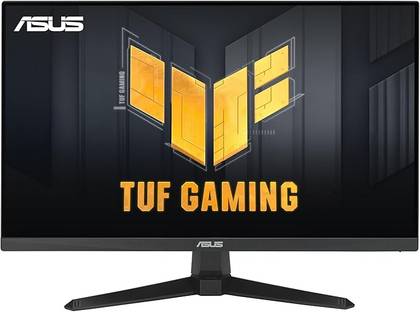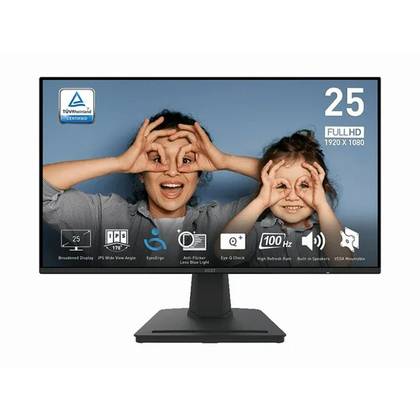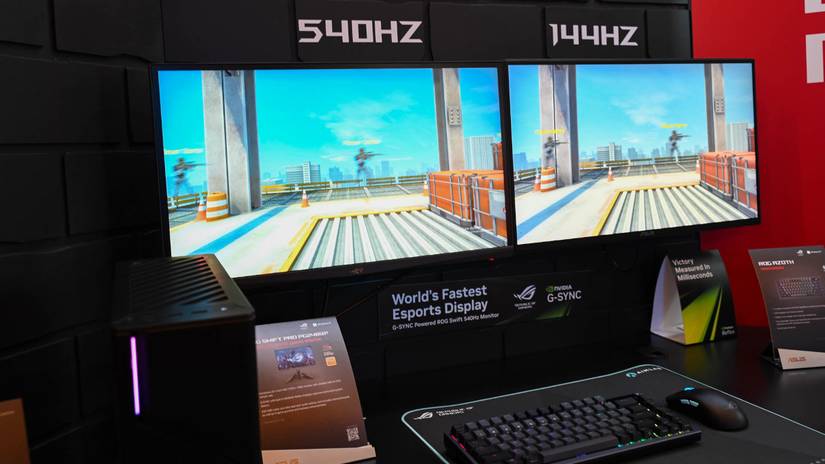Summary
-
I have an additional 100Hz monitor and it is much smoother than my old 60Hz monitor.
-
100Hz is the best option as it is significantly smoother than 60Hz while still being affordable.
-
Even for a secondary monitor, you should probably avoid 60Hz unless you can find a cheap used monitor.
I used to think refresh rate was only important for games. My secondary monitor was dedicated to displaying static text only, while I was all in on the main 240Hz 1440p display. However, I decided to spend a little more to get an additional 100Hz monitor and now I'm glad I did.
There's no more reason to buy a 60Hz monitor
Before we dive in, here's a quick explanation for those of you who aren't familiar with the term refresh rate. This refers to how many times per second the display updates its contents (for simplicity, let's assume that FPS equals refresh rate).
A 60Hz display refreshes 60 times per second, while a 100Hz display refreshes 100 times per second. This is why a higher refresh rate results in smoother motion and animation.
Honestly, I think 60Hz monitors are slowly becoming a thing of the past, which is great. Depending on where you buy monitors, you may not even see 60Hz displays anymore as they are mostly being replaced by higher refresh rate models, even in the business segment.
I looked at a few monitors on Amazon and had to scroll for quite some time to find a 60Hz monitor. SAMSUNG LC24F390FHNXZA. Oddly enough, its feature set doesn't match its price at all, so it's probably an older model that never sold out.
Realistically speaking, when you're browsing Amazon, Walmart, Best Buy, or any other online store, you'll likely encounter refresh rates of at least 100Hz. Even if you find 60Hz monitors, they're usually only $10 to $20 cheaper, so it's not exactly a bargain.
It makes more sense to spend a little more on one of these affordable high-refresh rate displays and use it as a secondary monitor than to struggle with a choppy 60Hz panel for years.
Deeply discounted gaming monitors are usually the best deal, as they can offer 144Hz or higher refresh rates and additional features for the same price as a standard business monitor. A few good examples that I would consider as a secondary display: ASUS TUF VG249QE5A, Philips 241V8LBAnd ASUS VA249HG.

- Brand
-
Asus
- Screen size
-
24 inches
The ASUS TUF Gaming VG249QE5A is an ideal 24-inch secondary monitor as it features a 1080p IPS panel with a 144Hz refresh rate. If you're on a budget, it can even serve as a primary gaming monitor thanks to its smooth refresh rate and 1ms response time.
The only reason to ever consider an additional 60Hz monitor is if you can find a used one locally for an insanely low price. Personally, I draw the line at $40 for a used monitor since you can never really know its age or condition. In my opinion, it makes sense to spend $100 on a new device with a high refresh rate and use it for years as a secondary monitor.
100Hz – the right balance between cost and smoothness
After my old secondary monitor that I've had for 15 years caught fire last year, I've been casually looking for a replacement for the past few months.
I wasn't sure if I should buy a used 60Hz display on the cheap because that was one of the things that always bothered me about my old secondary monitor. At the time, it was a 19-inch 1440×900 display sitting next to a 1080p 140Hz monitor, and the transition between the two always felt blurry. Now that I have a 240Hz monitor, I knew going from 240Hz to 60Hz when moving windows would be even more jarring.
That's why I decided to pay a little more for a quality monitor that comes with a warranty and is likely to last for many years. Eventually I came across MSI PRO MP252. I had a list of pretty basic requirements, and this monitor ticked all the boxes: at least 24 inches in size, IPS panel, 100Hz+ refresh rate, DisplayPort and HDMI connectivity, and a VESA mount so I could attach it to the monitor arm. I felt that under $100 was a fair price, especially since many of the gaming monitors I looked at didn't have VESA mount, which was a deal breaker for me.

- Brand
-
MSI
- Screen size
-
25 inches
MSI PRO MP252 is a 24.5-inch business monitor with a resolution of 1920×1080 and a refresh rate of 100Hz. It supports adaptive sync, is VESA mounted, has built-in speakers, and includes several Eye Care features to help protect your vision.
As soon as I installed my new monitor, I knew I had made the right choice. I tried the classic refresh rate test by dragging a window up and down across both screens, and while I noticed a difference between the two, it wasn't as significant as you'd expect given the difference between 100Hz and 240Hz.
In fact, I can barely tell the difference between my 120Hz TV and my 240Hz monitor in non-competitive games, so I use 100Hz display for everyday Windows tasks more than enough.
I know 100Hz doesn't sound like much, but it actually is: 100Hz is 66.7% faster than 60Hz, a difference that almost anyone can feel. This makes using any modern computer more convenient. Even if the average person can't say for sure Why their computer runs smoother with a high refresh rate display, they will notice the difference.
Surprisingly, what bothered me the most was that resolution 1080psince I'm so used to my 1440p monitor. However, given the significantly higher prices of 1440p monitors, I'm not willing to spend the extra money on an additional display.
Whether you buy a primary or secondary monitor, make sure it has a high refresh rate. Unlike others Gamer-oriented features such as low response time or adaptive sync, the high refresh rate is noticeable even during normal web browsing or everyday tasks. It's definitely worth spending a few extra dollars on!









